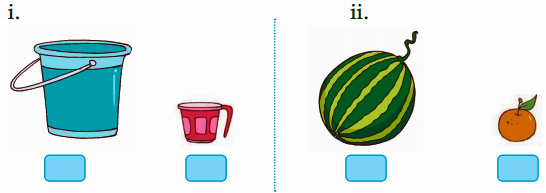Lina's Family - Exercise-wise Questions and Answers For Class 1 Maths - Free PDF Download
FAQs on NCERT Solutions For Class 1 Maths Chapter 7 Lina's Family - 2025-26
1. How do Vedantu's NCERT Solutions for Class 1 Maths Chapter 7 help in solving the textbook exercises?
The NCERT Solutions for Chapter 7, "Lina's Family," provide clear, step-by-step guidance for every problem in the textbook. They break down foundational concepts like longer/shorter and heavier/lighter, ensuring students learn the correct method to arrive at answers as per the CBSE 2025-26 curriculum.
2. What are the main measurement concepts explained in the NCERT Solutions for Chapter 7?
The solutions for this chapter focus on introducing basic measurement through comparison. The key concepts explained with examples include:
- Comparing lengths (longer, shorter, longest, shortest)
- Comparing heights (taller, shorter, tallest, shortest)
- Understanding thickness (thicker, thinner)
- Comparing weights (heavier, lighter)
3. According to the NCERT Solutions, what is the correct method to compare the height of two objects?
The solutions demonstrate that to accurately compare the height of two objects, both must be placed on the same level surface or baseline. This ensures a fair comparison, making it easy to correctly identify which object is taller and which is shorter without any confusion.
4. Why is it important to use a common starting point when comparing the lengths of two objects, as shown in the Chapter 7 solutions?
Using a common starting point is crucial because it ensures an accurate and fair comparison. If two objects, like pencils, are not aligned at one end, one might incorrectly appear longer or shorter than it really is. The NCERT solutions stress this step to build a strong, logical foundation for all future measurement skills.
5. The NCERT Solutions for Chapter 7 use hand spans for measurement. Why might two people get different answers when measuring the same table?
This is an excellent question that highlights a key concept. Hand spans are a non-standard unit of measurement. Since every person's hand size is different, the number of hand spans needed to measure a table will change from person to person. The solutions use these examples to help students understand why standard units (like centimetres and metres) are needed later for everyone to get the same answer.
6. What method do the NCERT Solutions propose for a Class 1 student to identify the heaviest object among a few items?
For Class 1 students, the solutions introduce the concept of weight comparison visually and practically. Often, this is explained using a simple seesaw or balance scale. The side that goes down holds the heavier object. To find the heaviest among three items, you would first compare two items, and then compare the heavier one with the third item.
7. How does mastering the concepts in "Lina's Family" through NCERT Solutions help a Class 1 student in daily life?
The skills of comparison are used constantly in daily life. By understanding the solutions, a student can:
- Choose the longer crayon for drawing.
- See who is taller among their friends in a line.
- Feel if their school bag is heavier than their lunch box.
- Arrange their toys from shortest to tallest.
8. Are the NCERT Solutions for Class 1 Maths Chapter 7 aligned with the 2025-26 syllabus?
Yes, absolutely. All solutions, including those for Chapter 7 "Lina's Family," are carefully prepared and updated to be fully compliant with the latest CBSE syllabus and NCERT guidelines for the 2025-26 academic session. This ensures students receive the most accurate and relevant study material.





























































